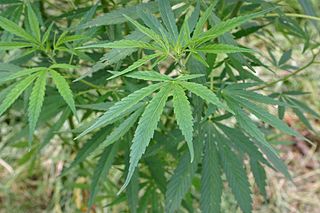Study: Marijuana Least Dangerous Drug of Choice
Marijuana is the No. 1 most popular drug of choice, when compared to cocaine, opioids and amphetamines. And yet, researchers say, it was not responsible for any of the 78,000 deaths attributed to illegal drug use in 2010.

That’s according to a new study from the University of Washington, which conducted the first ever global survey of illicit drug abuse.
Our Los Angeles marijuana lawyers noted that in commenting on the latest findings, Dr. Lester Grinspoon of Harvard Medical School said that it reaffirms beliefs that not only is marijuana non-toxic, it is “remarkably non-toxic.”
Of course, this study focused on those who use the drug for recreation. But for many people, marijuana is so much more than that.
Dr. Grinspoon says that 45 years ago, he never would have agreed with the notion of marijuana as medicine. He firmly believed that friends of his who smoked were ruining their health. It was a notion that the U.S. government firmly backed, going so far as to classify the drug as a Schedule I substance back in 1970, putting it in the same category as LSD and heroin. That meant it had no accepted medical purpose.
However, Dr. Grinspoon began to rethink his stance when his son, a teenager, was diagnosed with acute lymphocytic leukemia. The chemotherapy necessary to save his life left him with the kind of nausea that permeates every fiber of your being. He had absolutely zero appetite, and the prescription drugs did nothing to ease his pain. The doctor’s wife was desperate. She asked a friend of her son’s to purchase some marijuana.
The nausea dissipated. His appetite returned.
While smoking the drug makes it somewhat of a wild card in terms of dosage, there is no question that the medical benefits are extensive. It’s been proven to reduce intraocular pressure in glaucoma patients, it reduces anxiety and stimulates appetite.
The challenge for doctors is determining a way to deliver the benefits of THC in a way that maximizes absorption while limiting the psychoactive effect.
Researchers at the University of Mississippi – one of the few government-approved marijuana research centers – have been trying to do this for years. One of the latest solutions they have developed is a THC patch applied to the gum line. That product has yet to be approved by the U.S. Food & Drug Administration.
That’s not to say the drug isn’t without negative side effects. A study conducted last year by the Proceedings of the National Academy of Sciences found that teens who regularly used the drug for recreation experienced marked IQ drops that couldn’t be attributed to other drugs are lesser education.
All of the negative side effects that can occur with the drug – irritability, paranoia, psychosis – are most often attributed to higher doses. Lower doses are in fact associated with the opposite effects, including a sense of calm and contentedness.
Of course, these are issues that could be mitigated with proper, consistent regulation, whether the focus is on recreational or medicinal use. Keeping it out of the hands of children, except for medicinal purposes and in measured doses, could go far to reduce the negative outcomes that are reported.
The Los Angeles CANNABIS LAW Group represents growers, dispensaries, collectives, patients and those facing marijuana charges. Call us at 949-375-4734.
Additional Resources:
How Perilous is Pot? Sept. 4, 2013, By Cassie Shortsleeve, Men’s Health
The Truth About Medical Marijuana, 2013, By Cassie Shortsleeve, Men’s Health
More Blog Entries:
DOJ Announces: We Won’t Sue States to Reverse Marijuana Legalization, Aug. 30, 2013, Los Angeles Marijuana Lawyer Blog
 Cannabis Law Group's Medical Marijuana Legal Blog
Cannabis Law Group's Medical Marijuana Legal Blog




